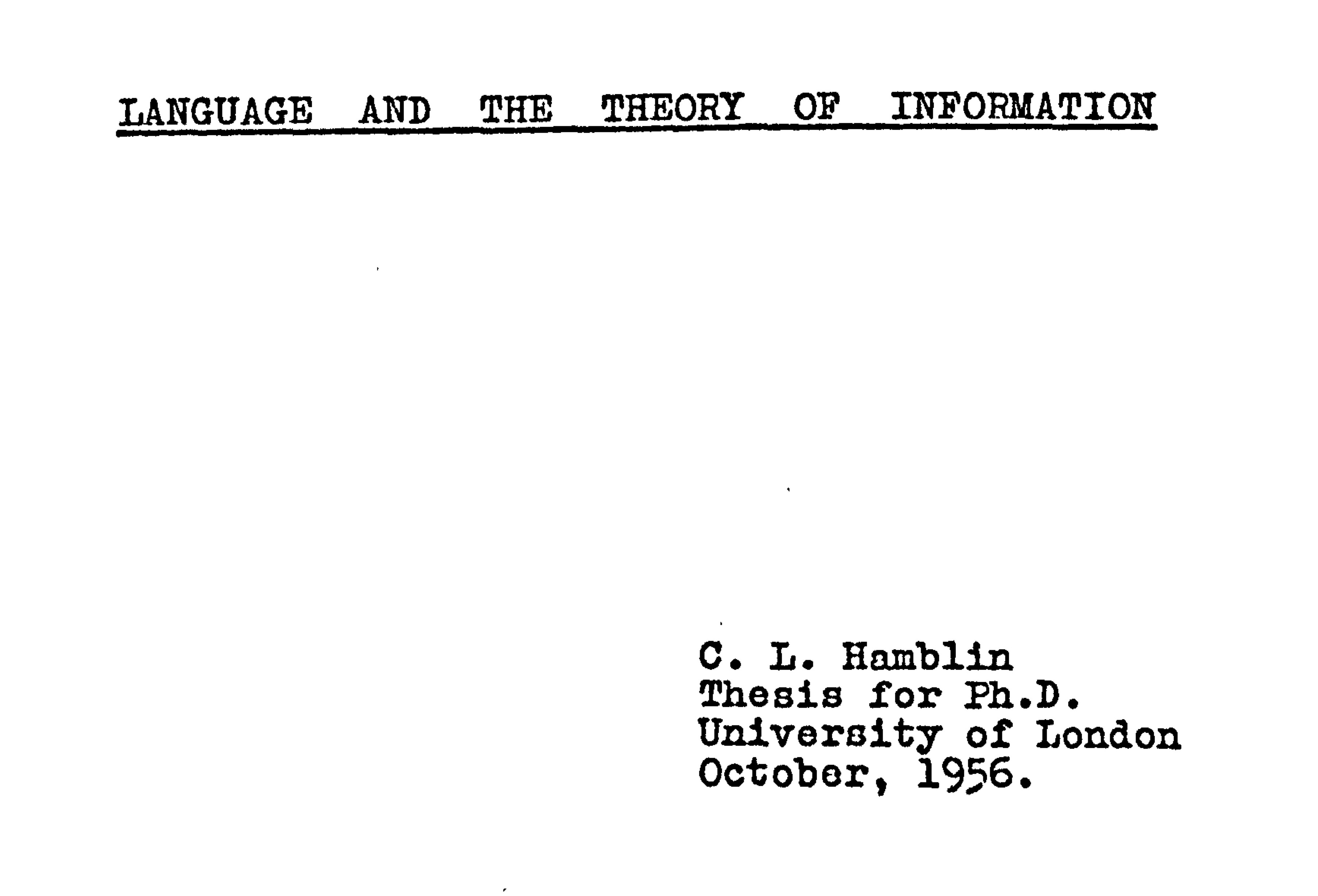[This is a revision of a 2003 blog post.]
A student in my 2003 advanced semantics class asked about C.L. Hamblin, who in semantics is mostly — and justly — famous for his early montagovian paper on questions: C.L. Hamblin: 1973. “Questions in Montague English”, Foundations of Language 10: 41–53. [By the way, Foundations of Language was the precursor journal of Linguistics and Philosophy.]
But who was he and what else did he do? I didn’t know, but in 2003 I found two web pages by Peter McBurney about him. It turns out that he was both a philosopher and apparently a pioneer in computer science (he died in 1985):
[Francisco Gomes Martins pointed out to me this week that my old post about Hamblin had defunct links in it. Luckily, the Wayback Machine at archive.org still has copies. So, that’s what’s linked to above.]
Two tidbits: “According to his obituary in the Sydney Morning Herald, Hamblin spoke 25 languages, mostly from the Asian-Pacific region, but also including ancient Greek. … At the time of his death, he was apparently attempting to set words of Wittgenstein to music.”
After I first posted about this, Peter McBurney, the author of the two web pages referred to above, wrote to me to remind me that
Hamblin’s book on Imperatives (published posthumously in 1987 by Blackwell, Oxford) was also influential with some linguists. This book has also influenced some recent work in computer science, on automated delegation between computational entities.
Peter McBurney followed up with another email:
Dear Kai —
In your email of 8 May, you asked me about Charles Hamblin’s teachers in London. I have now had the opportunity of reading Hamblin’s PhD thesis at University of London. Although no one is thanked or acknowledged in his thesis, I have learnt from a former PhD student of Hamblin that he did his PhD under Karl Popper.
The thesis presents a strong critique of Claude Shannon’s then-recent theory of information for failing to deal with the meaning of information, along with a semantic theory of question-response interactions. Hamblin proposes a possible-worlds semantics for these, which is interesting in light of the fact that this was written 3 years before Saul Kripke’s first publication on the matter in 1959. Hamblin’s thesis also considers everyday usage of the word “information” and how this bears on any theory of information. His thesis is a mix of computer theory, philosophy of logic, formal logic, and philosophy of language — perhaps one of the earliest works in which these disciplines were combined.
Best,
— Peter
Francisco asked me whether Hamblin’s thesis is available online. After some digging, it turns out it is:
http://ethos.bl.uk/OrderDetails.do?did=3&uin=uk.bl.ethos.504487
You have to register for free and go through some hoops but in the end you will be able to download a pdf of Hamblin’s thesis. Here’s the cover page:
